 H above and photos below cumberland market londonCharles Isaac Ginner
H above and photos below cumberland market londonCharles Isaac Ginner  (1878–1952) was a painter of landscape and urban subjects. Born in the south of France at Cannes, of British parents,
(1878–1952) was a painter of landscape and urban subjects. Born in the south of France at Cannes, of British parents,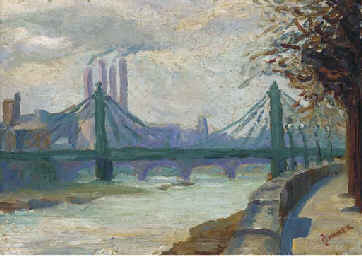 in 1910 he settled in London, where he was an associate of Spencer Gore
in 1910 he settled in London, where he was an associate of Spencer Gore and Harold Gilman and a key member of
and Harold Gilman and a key member of  theCamden Town Group, born on 4 March 1878 in Cannes, the second son of Isaac
theCamden Town Group, born on 4 March 1878 in Cannes, the second son of Isaac 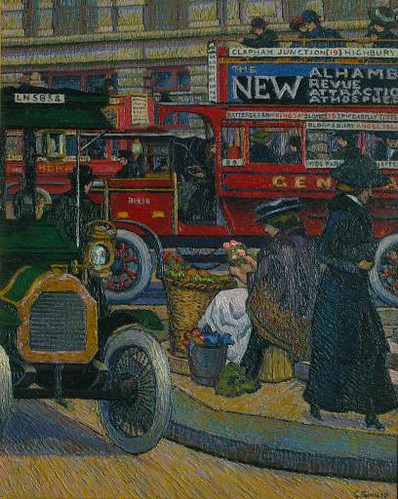 Benjamin Ginner, a British doctor. He had a younger sister, Ruby (b. 1886; who became the dance teacher Ruby Ginner Dyer).
Benjamin Ginner, a British doctor. He had a younger sister, Ruby (b. 1886; who became the dance teacher Ruby Ginner Dyer). He was educated in Cannes at the Institut Stanislas.
He was educated in Cannes at the Institut Stanislas.
At an early age he formed the intention of becoming a painter, but his parents disapproved. When he was sixteen he suffered from typhoid and double pneumonia and travelled in a tramp steamer around the
he suffered from typhoid and double pneumonia and travelled in a tramp steamer around the  south Atlantic and the Mediterranean to
south Atlantic and the Mediterranean to 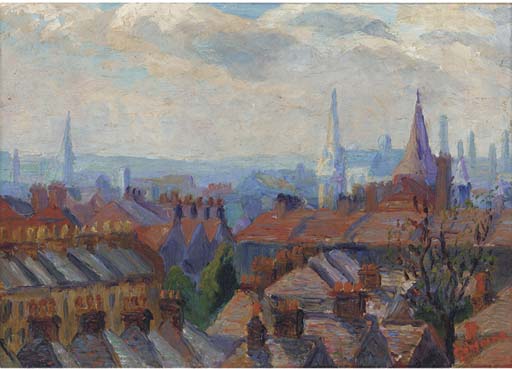 convalesce; and on returning to Cannes worked in an engineer's office, and in 1899, at the age of 21, moved to Paris to study architecture.
convalesce; and on returning to Cannes worked in an engineer's office, and in 1899, at the age of 21, moved to Paris to study architecture.
In 1904, his parents withdrew their opposition to his becoming a painter, and Ginner entered the Academie Vitti,  he suffered from typhoid and double pneumonia and travelled in a tramp steamer around the
he suffered from typhoid and double pneumonia and travelled in a tramp steamer around the  south Atlantic and the Mediterranean to
south Atlantic and the Mediterranean to  convalesce; and on returning to Cannes worked in an engineer's office, and in 1899, at the age of 21, moved to Paris to study architecture.
convalesce; and on returning to Cannes worked in an engineer's office, and in 1899, at the age of 21, moved to Paris to study architecture. where Henri Martin was teaching but where Ginner worked mostly under Gervais, who disapproved of Ginner's use
where Henri Martin was teaching but where Ginner worked mostly under Gervais, who disapproved of Ginner's use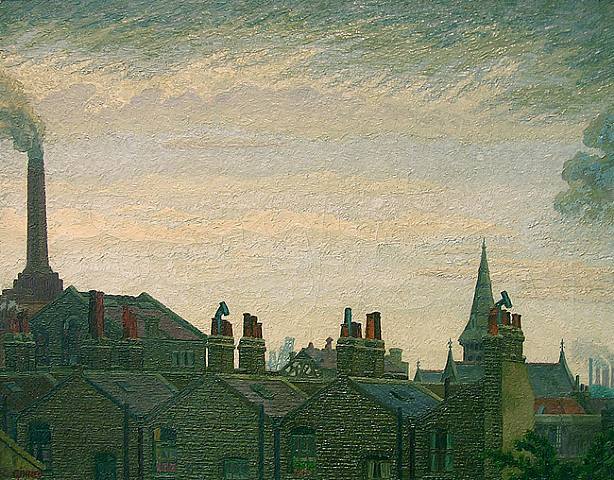 of bright colors. In 1905, Ginner moved to the Ecole des Beaux Arts, but in 1906, after Gervais had left, he returned to Vitti's, where his principal teacher was Hermenegildo Anglada Camarasa,
of bright colors. In 1905, Ginner moved to the Ecole des Beaux Arts, but in 1906, after Gervais had left, he returned to Vitti's, where his principal teacher was Hermenegildo Anglada Camarasa, who disapproved of Ginner's admiration for Vincent van Gogh.n 1908, Ginner left Vitti's and worked on his own in Paris, taking Vincent van Gogh, Paul Gaugin and Paul Cezanne for his guides.
who disapproved of Ginner's admiration for Vincent van Gogh.n 1908, Ginner left Vitti's and worked on his own in Paris, taking Vincent van Gogh, Paul Gaugin and Paul Cezanne for his guides.
In 1909, Ginner visited Buenos Aires, Argentina, where he held his first one-person show, which helped to 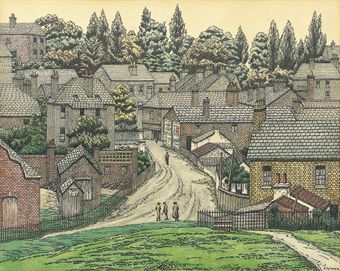 introduce post-Impressionism to South America. His oil paintings showed the influence of Van Gogh, with their heavy impasto paint.
introduce post-Impressionism to South America. His oil paintings showed the influence of Van Gogh, with their heavy impasto paint.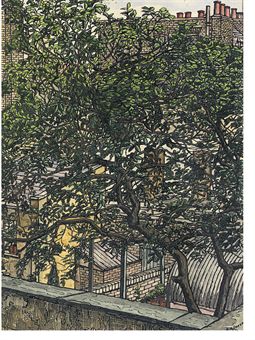
 introduce post-Impressionism to South America. His oil paintings showed the influence of Van Gogh, with their heavy impasto paint.
introduce post-Impressionism to South America. His oil paintings showed the influence of Van Gogh, with their heavy impasto paint.
In 1910 Ginner went to London, to serve on the Hanging Committee of the Allied Artists Association's third exhibition. Harold Gilman and Spencer Gore became his friends and persuaded him to settle in London. He lived at first in Battersea, but afterwards in Camden Town,
became his friends and persuaded him to settle in London. He lived at first in Battersea, but afterwards in Camden Town,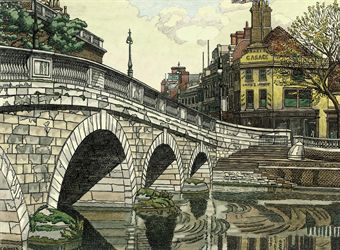 where he was a neighbor of Gilman and Gore his north london girl below
where he was a neighbor of Gilman and Gore his north london girl below The sitter of Gore’s picture helped serve tea at the Saturday afternoon ‘At Homes’ held at 19 Fitzroy Street, where artists and collectors gathered to display and discuss painting. The woman lived in nearby Cumberland Market, and is shown here in hat and overcoat as if she has just arrived or is about to depart the cosy surroundings. Gore pays as much attention to the luminosity of her complexion – drawn out with greens, blues and pinks – as to the billowing folds of the curtain and the floral wallpaper behind her
The sitter of Gore’s picture helped serve tea at the Saturday afternoon ‘At Homes’ held at 19 Fitzroy Street, where artists and collectors gathered to display and discuss painting. The woman lived in nearby Cumberland Market, and is shown here in hat and overcoat as if she has just arrived or is about to depart the cosy surroundings. Gore pays as much attention to the luminosity of her complexion – drawn out with greens, blues and pinks – as to the billowing folds of the curtain and the floral wallpaper behind her
 became his friends and persuaded him to settle in London. He lived at first in Battersea, but afterwards in Camden Town,
became his friends and persuaded him to settle in London. He lived at first in Battersea, but afterwards in Camden Town, where he was a neighbor of Gilman and Gore his north london girl below
where he was a neighbor of Gilman and Gore his north london girl below The sitter of Gore’s picture helped serve tea at the Saturday afternoon ‘At Homes’ held at 19 Fitzroy Street, where artists and collectors gathered to display and discuss painting. The woman lived in nearby Cumberland Market, and is shown here in hat and overcoat as if she has just arrived or is about to depart the cosy surroundings. Gore pays as much attention to the luminosity of her complexion – drawn out with greens, blues and pinks – as to the billowing folds of the curtain and the floral wallpaper behind her
The sitter of Gore’s picture helped serve tea at the Saturday afternoon ‘At Homes’ held at 19 Fitzroy Street, where artists and collectors gathered to display and discuss painting. The woman lived in nearby Cumberland Market, and is shown here in hat and overcoat as if she has just arrived or is about to depart the cosy surroundings. Gore pays as much attention to the luminosity of her complexion – drawn out with greens, blues and pinks – as to the billowing folds of the curtain and the floral wallpaper behind herand regularly attended the Saturday afternoons at 19 Fitzroy Street , meeting Robert Bevan
, meeting Robert Bevan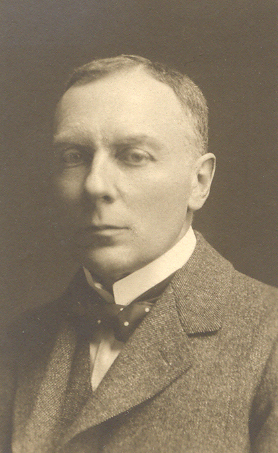 , John Nash, Albert Rothenstein, Christopher R. W. Nevinson, Jacob Epstein, Walter Bayes, Walter Sickert and Lucien Pissarro. In 1911, he became a member of the Camden Town Group; in 1913 of the London Group; in 1914 of the Cumberland Market GroupThe Cumberland Market Group was a short-lived artistic grouping in early twentieth century London.
, John Nash, Albert Rothenstein, Christopher R. W. Nevinson, Jacob Epstein, Walter Bayes, Walter Sickert and Lucien Pissarro. In 1911, he became a member of the Camden Town Group; in 1913 of the London Group; in 1914 of the Cumberland Market GroupThe Cumberland Market Group was a short-lived artistic grouping in early twentieth century London. The group met in the studio of Robert Bevan
The group met in the studio of Robert Bevan in Cumberland Market, the old hay and straw market off
in Cumberland Market, the old hay and straw market off Albany Street, and held one exhibition.
Albany Street, and held one exhibition.
 , meeting Robert Bevan
, meeting Robert Bevan , John Nash, Albert Rothenstein, Christopher R. W. Nevinson, Jacob Epstein, Walter Bayes, Walter Sickert and Lucien Pissarro. In 1911, he became a member of the Camden Town Group; in 1913 of the London Group; in 1914 of the Cumberland Market GroupThe Cumberland Market Group was a short-lived artistic grouping in early twentieth century London.
, John Nash, Albert Rothenstein, Christopher R. W. Nevinson, Jacob Epstein, Walter Bayes, Walter Sickert and Lucien Pissarro. In 1911, he became a member of the Camden Town Group; in 1913 of the London Group; in 1914 of the Cumberland Market GroupThe Cumberland Market Group was a short-lived artistic grouping in early twentieth century London. The group met in the studio of Robert Bevan
The group met in the studio of Robert Bevan in Cumberland Market, the old hay and straw market off
in Cumberland Market, the old hay and straw market off Albany Street, and held one exhibition.
Albany Street, and held one exhibition. Robert Bevan took the rooms on the first floor of 49 Cumberland Market, north of Regent's Park, in April 1914, after the break-up of the Camden Town Group and the formation of its successor, the London Group Robert Bevan took the rooms on the first floor of 49 Cumberland Market, north of Regent's Park, in April 1914, after the break-up of the Camden Town Group and the formation of its successor, the London Group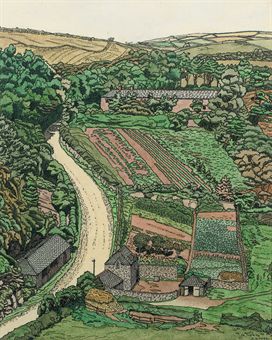 . He had been a founder member of both organizations.[3] He held meetings there with his friends, and these became a formalised group towards the end . He had been a founder member of both organizations.[3] He held meetings there with his friends, and these became a formalised group towards the end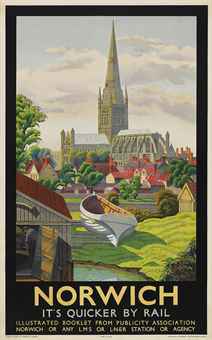 gimmer did these posters gimmer did these posters of the year, founded by him with fellow Camden Town Groupmembers, Ginner and Harold Gilman,  who began to work with the style called Neo-Realism. who began to work with the style called Neo-Realism. |
They defined what they did as exploring the shapes and colours of daily life (in particular those of north-west London), while also paying attention to their proper disposition compositionally and maintaining sensitivity to the medium of paint itself as key to an expressive image; the strong emphasis on natural observation was a  above gimmers kings cross
above gimmers kings cross
 above gimmers kings cross
above gimmers kings crossdifferentiation from the Camden Town Group. These principles were announced in a manifesto by Ginner published in New Age on 1 January 1914, and also employed as the preface to a joint show that year by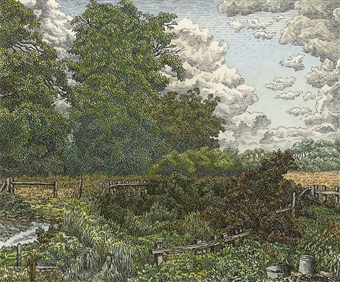 Gilman and Ginner. It spoke against the "decorative" features of Post-Impressionist followers, as well as attacking
Gilman and Ginner. It spoke against the "decorative" features of Post-Impressionist followers, as well as attacking
 Gilman and Ginner. It spoke against the "decorative" features of Post-Impressionist followers, as well as attacking
Gilman and Ginner. It spoke against the "decorative" features of Post-Impressionist followers, as well as attacking below Harold Gilman. Girl with a Tea Cup c. 1914 academic art.

In 1915 they were joined by John Nash.In April of that year the only exhibition of the Cumberland Market Group was held in theGoupil Gallery.
 The group was subsequently enlarged by the addition of the American artist Edward McKnight Kauffer and
The group was subsequently enlarged by the addition of the American artist Edward McKnight Kauffer and 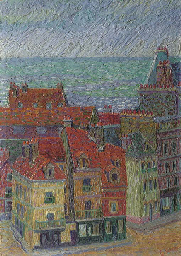 byChristopher Nevinson, but it held no further formal exhibitions. From 1916 to 1917 a School of Painting was run in Soho, based on the group's artistic philosophy.
byChristopher Nevinson, but it held no further formal exhibitions. From 1916 to 1917 a School of Painting was run in Soho, based on the group's artistic philosophy.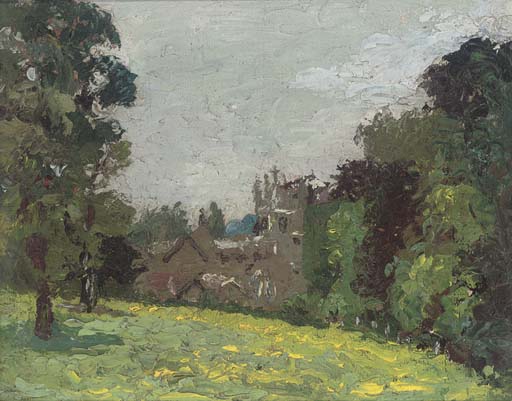 Goupil’s continued to be of help by allowing the group’s Saturday afternoon "At Homes" to be moved to their Grey Room. Although not officially dissolved,
Goupil’s continued to be of help by allowing the group’s Saturday afternoon "At Homes" to be moved to their Grey Room. Although not officially dissolved, the group lapsed after Gilman's death in 1919.. In 1914 in the New Age he spelt out the artistic creed known as New Realism. In the same year he
the group lapsed after Gilman's death in 1919.. In 1914 in the New Age he spelt out the artistic creed known as New Realism. In the same year he Flags and bunting decorating Flask Walk in Hampstead, north London, commemorate the coronation of George VI on 12 May 1937. At a distance, an enlarged image of George and Queen Elizabeth hangs over the street; verdant trees from Hampstead Heath are visible in the background beyond.
Flags and bunting decorating Flask Walk in Hampstead, north London, commemorate the coronation of George VI on 12 May 1937. At a distance, an enlarged image of George and Queen Elizabeth hangs over the street; verdant trees from Hampstead Heath are visible in the background beyond. Peter Barkworth left behind a remarkable collection of paintings following his death last year, writes Gerald Isaaman
YOU see it in the entrance hallway now as your enter Fenton House, the William and Mary merchant mansion atop Windmill Hill, Hampstead.
 There on the wall is Flask Walk, Hampstead Night, painted circa 1920 by Charles Ginner.
There on the wall is Flask Walk, Hampstead Night, painted circa 1920 by Charles Ginner.It is a remarkable picture, one of several Ginner was inspired to paint from the rooms he occupied above a shop in Hampstead High Street, directly opposite Flask Walk. And it was the favourite in the personal collection of Peter Barkworth, the noted actor who died last October, aged 77.
Flask Walk was his home from 1962, a struggle to buy for £8,500 despite earning two salaries, one from acting, the other teaching at RADA, where he had trained himself. When Barkworth died that translated into more than £1 million.
He left the house to his partner David Wyn Jones. And in his will, in which he left an estate valued at £2,256,862, he has bequeathed his collection of 55 paintings to the National Trust property fenton house on the edge of Hampstead Heath.
Few people knew of his passion for paintings, one reason being his fear of burglars.
I can recall bumping into him in the High Street and him inviting me with his brilliant smile: “Come and see what I’ve just bought.”
Indeed his burgeoning collection built up over the years ended up including two John Constables and works by Walter Sickert, David Cox, John Sell Cotman, Philip Wilson Steer, Spencer Gore, Harold Gilman, Duncan Grant, Peter de Wint, Helen Allingham and the Hampstead painter Robert Bevan.
He originally wanted to leave the collection to Burgh House, the nearby grade I-listed mansion, now a thriving community centre and home of the Hampstead Museum, which he helped to save when Camden Council wanted to flog it off to commercial interests.
But it did not have the room to hang so many pictures so more than a decade ago he told the National Trust that would go to Fenton House, itself left to the Trust by Lady Binning in a stunning country house with a magnificent walled garden.
“They have absolutely transformed the place,” Jane Ellis, curator of the grade I-listed property, told me. “It’s a fantastic collection. We have all the pictures hung now and everybody who comes here loves Peter’s legacy.
“It’s a fantastic collection. We have all the pictures hung now and everybody who comes here loves Peter’s legacy.
“It was such a delightful surprise and such a colourful and modern collection. He had a great love for Hampstead.”
And Peter has provided his own intimate contribution to what is now called the Peter Barkworth Collection by writing personal notes on the back of the various paintings, which are now listed in an addition to the Fenton House guide book.
Of the Flask Walk picture by Ginner, he says: “I bought this at Sotheby’s on Wednesday 10th June, 1081. It was included in the Points of View exhibition at Kenwood House, Hampstead, in the summer of 1997.”
That exhibition, which I helped to organise, celebrated the centenary of the Heath and Hampstead Society of which Peter was an active member. And of Ginner’s painting of Pond Street, Hampstead, Peter wrote: “This was painted before the Royal Free was there. “The church tower is still there, though the church itself (St Stephen’s) has been scandalously derelict since I came to live in Hampstead.”
“The church tower is still there, though the church itself (St Stephen’s) has been scandalously derelict since I came to live in Hampstead.” His two Constables are also significant, the more so as they have been hung in the Rockingham Room at Fenton House, alongside a so-called Constable left by Lady Binning.
His two Constables are also significant, the more so as they have been hung in the Rockingham Room at Fenton House, alongside a so-called Constable left by Lady Binning. 

One is a seascape with shipping, the other a small oil labelled Cumulus Clouds Over a Landscape. About this, Peter notes: “I believe this picture to have been painted in 1822. Certainly I like to think of him going the few yards to the top of the hill from his house at 2 Lower Terrace (Hampstead), and looking north at the small hills and the sky.”
Flask Walk was his home from 1962, a struggle to buy for £8,500 despite earning two salaries, one from acting, the other teaching at RADA, where he had trained himself. When Barkworth died that translated into more than £1 million.
He left the house to his partner David Wyn Jones. And in his will, in which he left an estate valued at £2,256,862, he has bequeathed his collection of 55 paintings to the National Trust property fenton house on the edge of Hampstead Heath.
Few people knew of his passion for paintings, one reason being his fear of burglars.
I can recall bumping into him in the High Street and him inviting me with his brilliant smile: “Come and see what I’ve just bought.”
Indeed his burgeoning collection built up over the years ended up including two John Constables and works by Walter Sickert, David Cox, John Sell Cotman, Philip Wilson Steer, Spencer Gore, Harold Gilman, Duncan Grant, Peter de Wint, Helen Allingham and the Hampstead painter Robert Bevan.
He originally wanted to leave the collection to Burgh House, the nearby grade I-listed mansion, now a thriving community centre and home of the Hampstead Museum, which he helped to save when Camden Council wanted to flog it off to commercial interests.
But it did not have the room to hang so many pictures so more than a decade ago he told the National Trust that would go to Fenton House, itself left to the Trust by Lady Binning in a stunning country house with a magnificent walled garden.
“They have absolutely transformed the place,” Jane Ellis, curator of the grade I-listed property, told me.
 “It’s a fantastic collection. We have all the pictures hung now and everybody who comes here loves Peter’s legacy.
“It’s a fantastic collection. We have all the pictures hung now and everybody who comes here loves Peter’s legacy.“It was such a delightful surprise and such a colourful and modern collection. He had a great love for Hampstead.”
And Peter has provided his own intimate contribution to what is now called the Peter Barkworth Collection by writing personal notes on the back of the various paintings, which are now listed in an addition to the Fenton House guide book.
Of the Flask Walk picture by Ginner, he says: “I bought this at Sotheby’s on Wednesday 10th June, 1081. It was included in the Points of View exhibition at Kenwood House, Hampstead, in the summer of 1997.”
That exhibition, which I helped to organise, celebrated the centenary of the Heath and Hampstead Society of which Peter was an active member. And of Ginner’s painting of Pond Street, Hampstead, Peter wrote: “This was painted before the Royal Free was there.
 “The church tower is still there, though the church itself (St Stephen’s) has been scandalously derelict since I came to live in Hampstead.”
“The church tower is still there, though the church itself (St Stephen’s) has been scandalously derelict since I came to live in Hampstead.” His two Constables are also significant, the more so as they have been hung in the Rockingham Room at Fenton House, alongside a so-called Constable left by Lady Binning.
His two Constables are also significant, the more so as they have been hung in the Rockingham Room at Fenton House, alongside a so-called Constable left by Lady Binning. 
This charming 17th-century merchant's house has remained architecturally little altered during more than 300 years of continuous occupation.
The large garden is also remarkably unchanged since it was described in 1756 as 'pleasant... well planted with fruit-trees, and a kitchen garden, all inclos'd with a substantial brick wall'.
Lady Katherine Binning bought the house in 1936 and filled it with her highly decorative collections of porcelain, Georgian furniture and 17th-century needlework.

One is a seascape with shipping, the other a small oil labelled Cumulus Clouds Over a Landscape. About this, Peter notes: “I believe this picture to have been painted in 1822. Certainly I like to think of him going the few yards to the top of the hill from his house at 2 Lower Terrace (Hampstead), and looking north at the small hills and the sky.”
Many of Peter’s water colours now adorn the staircase at Fenton House, replacing what Jane calls a collection of boring prints, and the largest number of pictures bring to life the once bare walls of the top floor, which houses Fenton House’s famed collection of early musical instruments
showed jointly with Gilman at the Goupil Gallery

.
During World War I Ginner was called up about 1916, serving firstly in the Royal Army Ordnance Corps, secondly in the Intelligence Corps and lastly for the Canadian War Records, for whom he made a painting of a powder-filling factory in Hereford.

In 1919, on Gilman's death he published an appreciation of the artist in Art and Letters. In 1920 he became a member of the New English Art Club.

During World War II he was again an Official War Artist, and specialised in painting harbor scenes and bombed buildings in London. In 1942 he became an Associate of the Royal Academy, where he advocated the admission of younger artists.

In 1950, he was awarded the C.B.E.
Ginner painted buildings in an urban context, as in his painting Plymouth Pier from The Hoe. His watercolours are unmistakable, with meticulous detailing of trees and buildings.
The Tate Gallery in London and many other galleries hold his work. The National Portrait Gallery, London, has a typically precise self-portrait.
He died in London on 6 January 1952; and The Arts Council of Great Britain held a touring memorial in 1953-4 .Cumberland Market was on Chester Terrace. It adjoined the basin of Regent's Canal, before it was filled with rubble from
.Cumberland Market was on Chester Terrace. It adjoined the basin of Regent's Canal, before it was filled with rubble from buildings damaged in the Second World War. The market was part of a complex of buildings, markets, shops and small
buildings damaged in the Second World War. The market was part of a complex of buildings, markets, shops and small  houses that serviced the grand terraces facing Regent's Park. The site is now part of a Crown Estate.
houses that serviced the grand terraces facing Regent's Park. The site is now part of a Crown Estate. 
 he
he 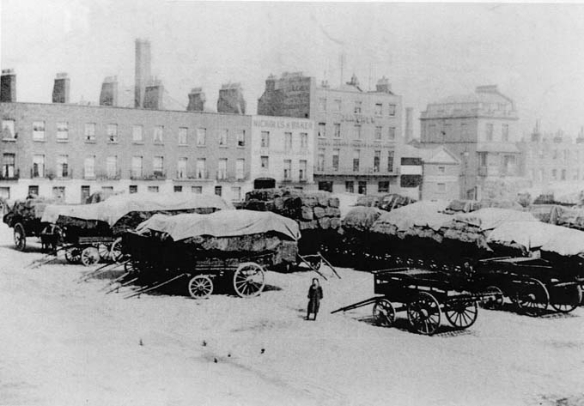 Camden
Camden  Henri Martin
Henri Martin was teaching
was teaching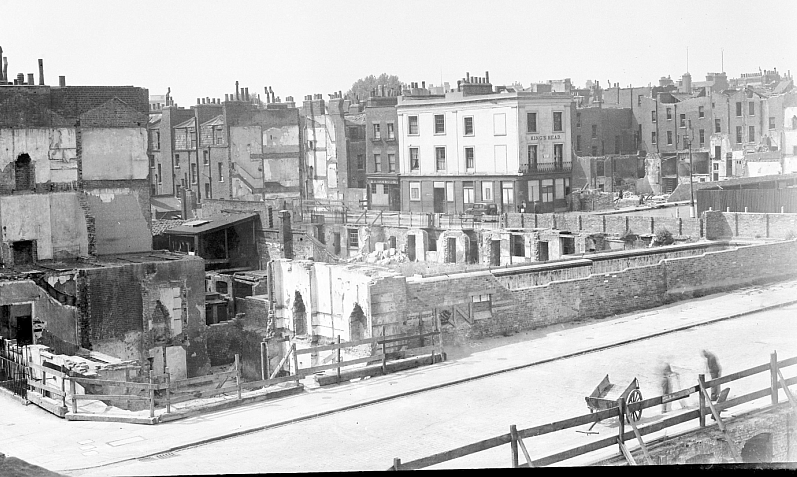
Henry Martin
Born in Toulouse to a French cabinet maker and a mother of Italian descent, Martin successfully persuaded his father to permit him to become an artist. He began his career in 1877 at the Toulouse School of the Fine Arts, where he was under the tutelage of Jules Garipuy(he was also a pupil of Henry-Eugéne Delacroix). In 1879, Martin relocated to Paris and with the help of a scholarship, was able to study in Jean-Paul Laurens' studio. Four years later, he received his first medal at the Paris Salon, where he would hold his first exhibition three years later in 1886.
Born in Toulouse to a French cabinet maker and a mother of Italian descent, Martin successfully persuaded his father to permit him to become an artist. He began his career in 1877 at the Toulouse School of the Fine Arts, where he was under the tutelage of Jules Garipuy(he was also a pupil of Henry-Eugéne Delacroix). In 1879, Martin relocated to Paris and with the help of a scholarship, was able to study in Jean-Paul Laurens' studio. Four years later, he received his first medal at the Paris Salon, where he would hold his first exhibition three years later in 1886.
The year after he won his first medal, Martin was awarded a scholarship for a tour in Italy, where he studied the work of veterans such as Giotto and Masaccio. His 1889 canvas submission to the Salon earned him the gold medal for work that has been described asPointillist. That same year he became a member of the Legion of Honour. At the 1900 World Fair, he was awarded the Grand Prize for his work. During this period, he became friends with Auguste Rodin.
Although Martin's work as a neo-impressionist is not considered groundbreaking, his work  was rather well-received, and has been associated with world-class symbolist painter, Puvis de Chavannes.
was rather well-received, and has been associated with world-class symbolist painter, Puvis de Chavannes.
 was rather well-received, and has been associated with world-class symbolist painter, Puvis de Chavannes.
was rather well-received, and has been associated with world-class symbolist painter, Puvis de Chavannes.
Due to his introverted temperament, Martin decided to move away from Paris. After a decade of searching for an ideal home, Martin bought Marquayrol, a mansion overlooking La Bastide du Vert, near Cahors.
near Cahors. He performed his best work in the new tranquil environment, and died there in 1943.
He performed his best work in the new tranquil environment, and died there in 1943. 
 near Cahors.
near Cahors. He performed his best work in the new tranquil environment, and died there in 1943.
He performed his best work in the new tranquil environment, and died there in 1943. 
No comments:
Post a Comment